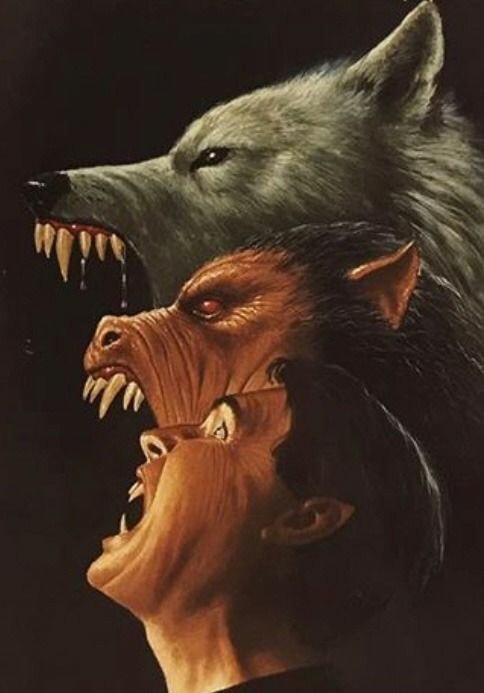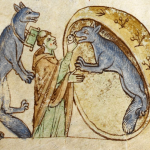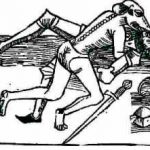The medieval chronicler Gervase of Tilbury associated the transformation with the appearance of the full moon, but this concept was rarely associated with the werewolf until the idea was picked up by modern fiction writers.
When the change from human to beast occurs, the features blur and coarsen, the body and palms of the hand become covered with fur, the eyes redden and glow, the nose runs, the mouth salivates, speech is replaced by guttural sounds and the werewolf drops to an animal position on all four with its nails extended into claws.

It gains accrued senses and the ability to locate his prey several kilometers away. The usual way for a werewolf to kill its victims is by biting through the jugular vein and feasting on the remains.
It was believed in the Middle Ages that the fur of the werewolf was under the normal human skin and were reversed during the metamorphosis. The idea of the skin being reversed is a very ancient one: versipellis occurs as a name of reproach in Petronius, Lucilius, and Plautus, and resembles the Norse hamrammr.
Job Fincelius relates the sad story of a farmer of Pavia, who, as a wolf, fell upon many men in the open country and tore them to pieces.
After much trouble the maniac was caught, and he then assured his captors that the only difference which existed between himself and a natural wolf, was that in a true wolf the hair grew outward, whilst in him it struck inward.
In order to put this assertion to the proof, the magistrates, themselves most certainly cruel and bloodthirsty wolves, cut off his arms and legs; the poor wretch died of the mutilation. This took place in 1541.
FINCELIUS de Mirabilibus, lib. xi.








